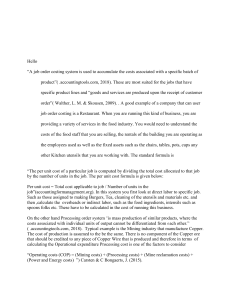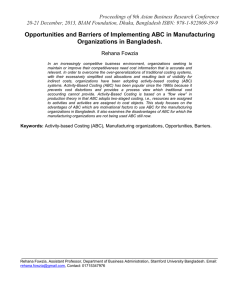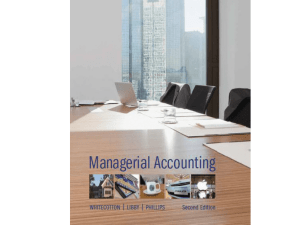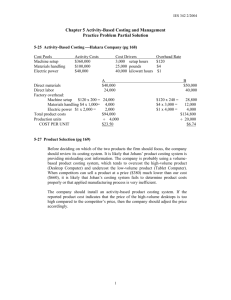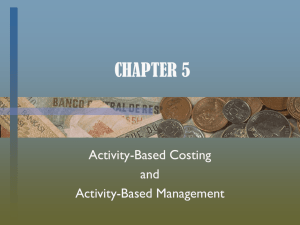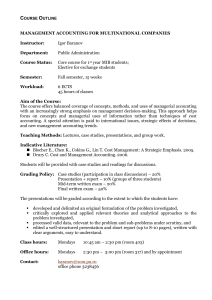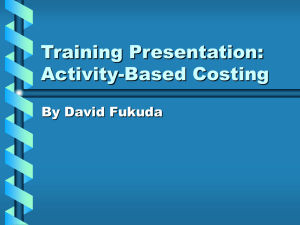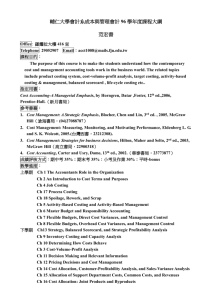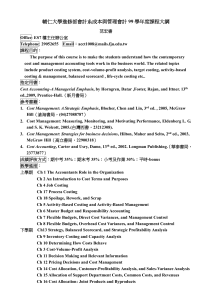Activity-Based Costing (ABC) Quiz & Problems
advertisement
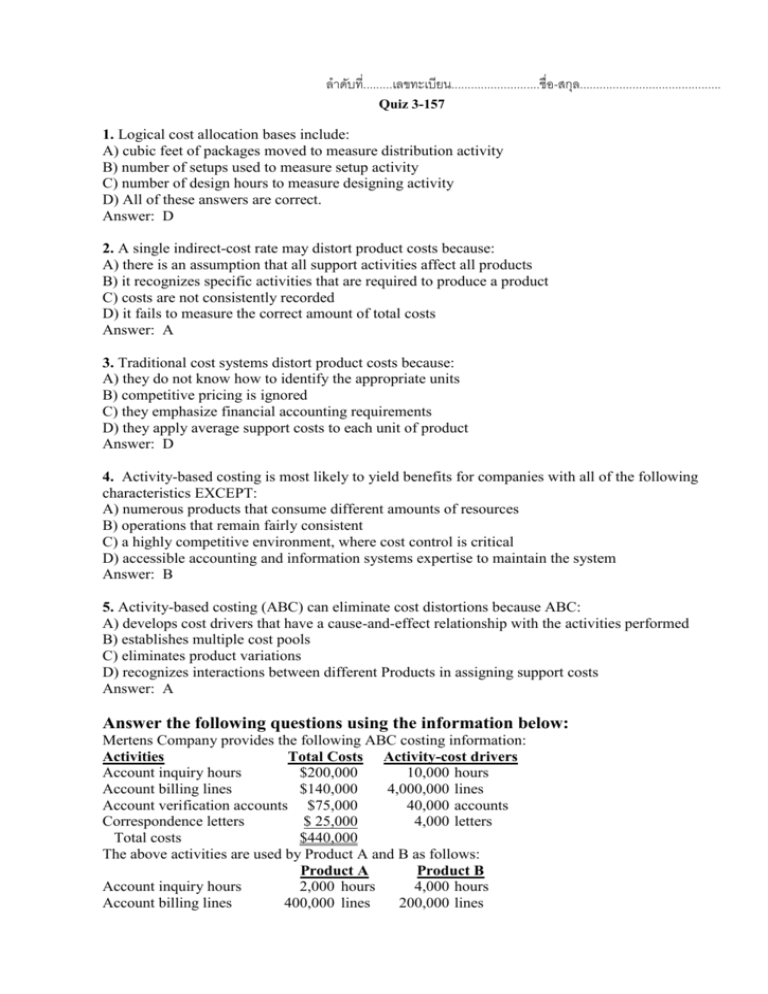
ลำดับที่.........เลขทะเบียน...........................ชื่อ-สกุล........................................... Quiz 3-157 1. Logical cost allocation bases include: A) cubic feet of packages moved to measure distribution activity B) number of setups used to measure setup activity C) number of design hours to measure designing activity D) All of these answers are correct. Answer: D 2. A single indirect-cost rate may distort product costs because: A) there is an assumption that all support activities affect all products B) it recognizes specific activities that are required to produce a product C) costs are not consistently recorded D) it fails to measure the correct amount of total costs Answer: A 3. Traditional cost systems distort product costs because: A) they do not know how to identify the appropriate units B) competitive pricing is ignored C) they emphasize financial accounting requirements D) they apply average support costs to each unit of product Answer: D 4. Activity-based costing is most likely to yield benefits for companies with all of the following characteristics EXCEPT: A) numerous products that consume different amounts of resources B) operations that remain fairly consistent C) a highly competitive environment, where cost control is critical D) accessible accounting and information systems expertise to maintain the system Answer: B 5. Activity-based costing (ABC) can eliminate cost distortions because ABC: A) develops cost drivers that have a cause-and-effect relationship with the activities performed B) establishes multiple cost pools C) eliminates product variations D) recognizes interactions between different Products in assigning support costs Answer: A Answer the following questions using the information below: Mertens Company provides the following ABC costing information: Activities Total Costs Activity-cost drivers Account inquiry hours $200,000 10,000 hours Account billing lines $140,000 4,000,000 lines Account verification accounts $75,000 40,000 accounts Correspondence letters $ 25,000 4,000 letters Total costs $440,000 The above activities are used by Product A and B as follows: Product A Product B Account inquiry hours 2,000 hours 4,000 hours Account billing lines 400,000 lines 200,000 lines Account verification accounts 10,000 accounts Correspondence letters 1,000 letters 8,000 accounts 1,600 letters 6. How much of the account inquiry cost will be assigned to Product A? A) $40,000 B) $200,000 C) $80,000 D) None of these answers are correct. Answer: A Explanation: A) ($200,000 / 10,000) × 2,000 = $40,000 7. How much of the account billing cost will be assigned to Product B? A) $14,000 B) $140,000 C) $7,000 D) None of these answers are correct. Answer: C Explanation: C) ($140,000 / 4,000,000) × 200,000 = $7,000 8. How much of account verification costs will be assigned to Product A? A) $15,000 B) $18,750 C) $75,000 D) $5,000 Answer: B Explanation: B) ($75,000 / 40,000) × 10,000 = $18,750 9. How much of correspondence costs will be assigned to Product B? A) $800 B) $6,250 C) $25,000 D) $10,000 Answer: D Explanation: D) ($25,000 / 4,000) × 1,600 = $10,000 10. How much of the total costs will be assigned to Product A? A) $79,000 B) $40,000 C) $112,000 D) $440,000 Answer: A Explanation: A) ($200,000 / 10,000) x 2,000 = $40,000 ($140,000 / 4,000,000) x 400,000 = $14,000 ($75,000 / 40,000) x 10,000 = $18,750 ($25,000 / 4,000) x 1,000 = $6,250 $79,000

